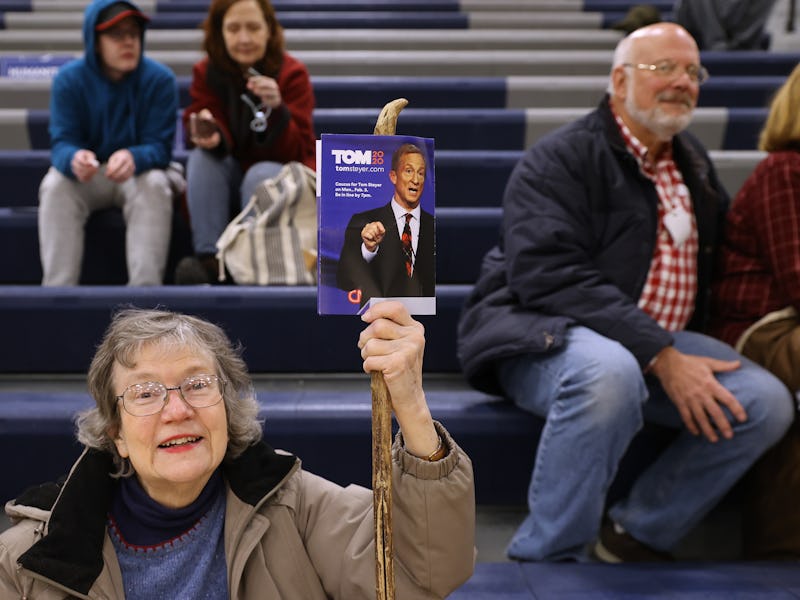Culture
One of the Iowa Caucus app's biggest points of failure? Boomers.
Older volunteers were unwilling or unable to figure out how to use the new reporting app, so the Caucus fell apart.

It’s now Tuesday morning, and the results from the Iowa Caucus still aren’t in. The lack of numbers is being blamed mostly on a new app that Democrats introduced for tallying results. But the problem here might not just be a technological one: the issue may very well lie in the hands of older people who couldn’t figure out how to use the app.
“Many precinct leaders ignored the party’s request that they download the app before caucus night or found the process of installing it too cumbersome,” reports The New York Times.
As part of a set of reforms following the 2016 election, the Iowa Democratic Party introduced an app intended to make reporting numbers on caucus night easier. But there was a problem with the much ballyhooed innovation: Most people didn’t use it.
And Laura Hubka, a Democratic chairwoman from Iowa’s Howard County, makes it clear just who the unwilling volunteers were: “Most of the precinct chairs were a little older,” she told The Times. “They weren’t comfortable with it.”
Chaos reigns — So many of the more than 1,600 volunteers were unable or unwilling to figure out how to download and use the app that the Iowa Caucus fell apart at the seams. Volunteers who chose not to take the time to learn how to use a simple app fell into a backup plan: call the results in manually, as has been done in the past.
But so many volunteers called in their results that the phone lines became overwhelmed — presumably because of expectations that precinct leaders would be using the app — with many waiting on hold for hours or being disconnected. Caucus chairs were also instructed to email a picture of their handwritten results to an iowademocrats.org address. Because that's very secure.
Unprepared — Many volunteers are reportedly blaming the app problems on a lack of preparedness. Instructions for the app weren’t sent out until just days before the caucus, while others reported issues logging in with a secure PIN code.
“A lot of people were like, ‘I’m getting a virus on my phone,’ and just quit it,” one county chairman told The Times. The chances of this app actually installing any sort of virus on volunteers’ phones is slim to none. More likely: users simply did not take the time to figure out the app and assumed the worst.
The issues raise questions not just about app functionality, but about user experience and user interface design. A bad onboarding process or overly complex interface could easily make users rage quit and never return to the software. The shores of Silicon Valley are littered with the bodies of good apps with bad execution, and with some reports stating that the caucus software was developed for just $60,000 (well below market for something as complex as this app seems to be), it's no wonder corners were cut.
A bad app, an unwilling audience — And so while reports keep flooding in that the app was “quickly put together” in the past two months, that it wasn’t tested properly, or even that it was hacked, the reality of the situation is possibly much simpler and much more embarrassing: older volunteers just couldn’t figure out the app in a lot of cases.
“I have 75-year-old caucus chairs who are sitting here going, ‘I’m just going to call that in,’” said one Democratic co-chair. “This was too many new things to learn for a lot of people. Not everybody that goes to the caucus is a 20-year-old college kid.”